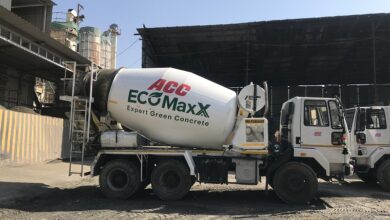District Cooling: An effective tool for green growth of the real estate sector
By Sudheer Perla,Country Head, Tabreed India

India’s green growth agenda
With the Union Budget 2023-24 placing a strong emphasis on green growth, and the recently concluded India Energy Week 2023 under India’s G20 presidency focusing on energy security, affordability and sustainability, it has become clear that as India grows it will need to walk the tightrope of balance between growth and environmental sustainability in order to achieve its goals of becoming the third largest economy in the world attaining Net Zero by 2070.
In this context, it is crucial to recognise the real estate sector’s contribution to GDP at 13% and disproportionately high energy consumption at 40%. On dissecting this data point further, we find that of 40–60% of a building’s overall energy requirement claimed by the real estate sector, goes towards thermal comfort, that is 15-30% of total energy consumption is for thermal comfort. As per a World Bank report, in 2050, 45% of India’s peak electricity demand is expected to come from space cooling alone. Hence, it is imperative that we shift the country’s cooling demand to energy-efficient technologies, alongside passive cooling measures which can support unburdening and decarbonizing of the grid.
District Cooling: Energy efficiency at the heart of green growth
District Cooling (DC) is one such technology that has been widely proven and adopted globally, and has the potential to provide a viable pathway to the country to reduce energy consumption in the built environment as the growth of real estate sector continues, while supporting larger and more inclusive cooling access.
A District Cooling System (DCS) aggregates cooling demand across buildings with various end uses in order to supply chilled water from a central plant to buildings through a network of insulated pipes. For instance, aggregation of cooling demand across office and residential apartment buildings in an IT township can save capex since cooling is provided through a single, smaller central installed base as opposed to through a separate unitary cooling system for each building. Similar to this, by implementing DCS, the entire township’s energy usage is optimised as the system would operate at peak loads at most times, achieving its intended design efficiency.
Another, often overlooked advantage of DCS is its ability to position itself as an enabling platform to create multi-energy systems, which can rely on various sources of energy depending on local conditions. City gas distribution (CGD) and waste to energy (W2E) facilities are excellent examples of how integration with DCS may give anchor demand to CGDs and W2E, hence supporting viability while relieving the grid through demand shaving. Similar to this, using DCS in conjunction with thermal energy storage and renewable sources of power can add flexibility to the grid by absorbing more intermittent renewable electricity when available and shifting peak energy consumption to off-peak hours. Overall, DCS assists customers in reducing installed capacity by up to 30%, energy bills by 20 – 50%, while cutting emissions from power consumption and coolant leakage by up to 50%.
These systems when implemented through business models such as Cooling as a Service (CaaS) effectively transfer the risk of ownership and operations to a service provider like Tabreed, eliminating requirement for initial investment by a customer and taking away the hassle of operations and maintenance.
Way forward: Towards Greener Cities
Around 50% of India’s 2030 building stock is yet to be built. If we want to achieve sustainability targets and decarbonize the economy, we must increase the energy efficiency of buildings through adoption of technologies such as district cooling while promoting design aspects that bring down the energy performance index of buildings. National policy and regulatory reforms including capacity building will be necessary to navigate these energy transitions and to synchronize efforts to accelerate adoption of DCS, alongside persistent inroads by industry to create awareness through communication and simplification. DCS provides the most cost-efficient, low-carbon pathway for not just buildings but entire cities to meet their energy needs while aiding sustained, green, inclusive economic growth for the country.






